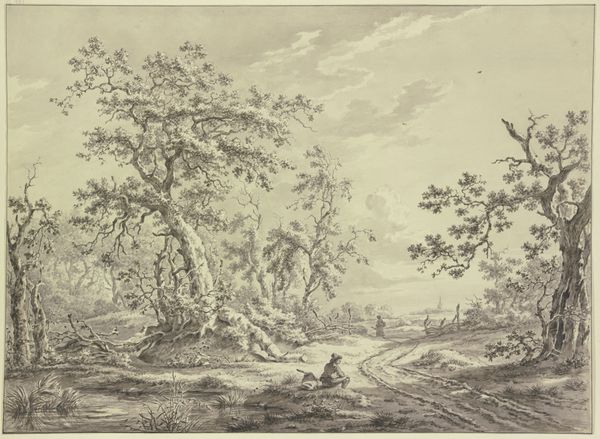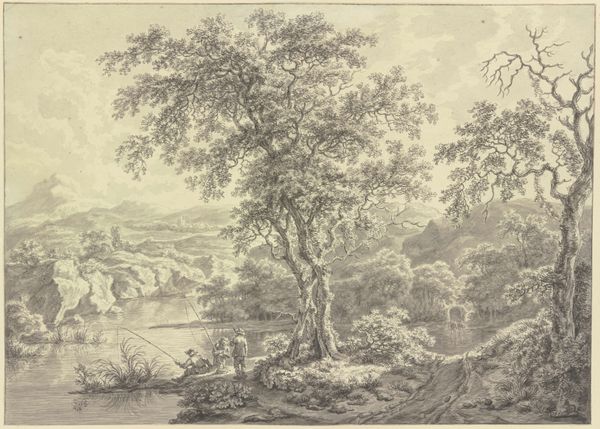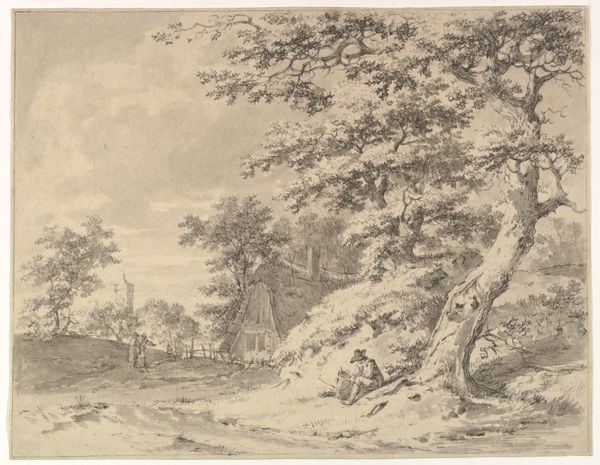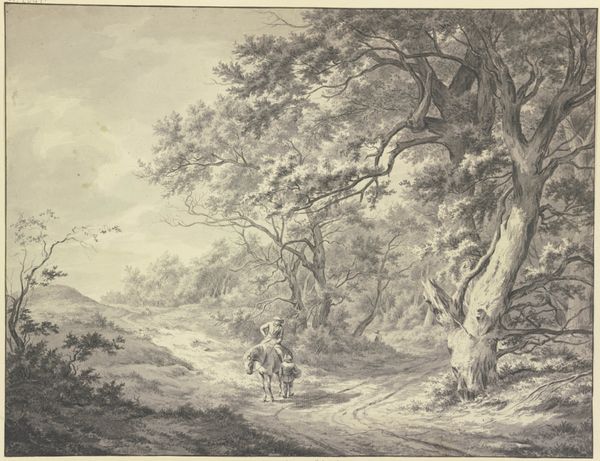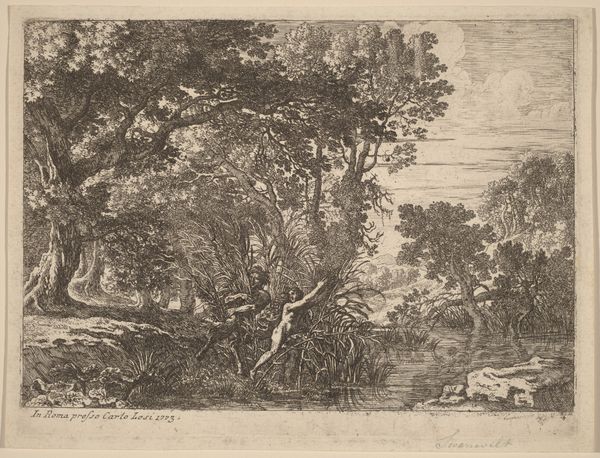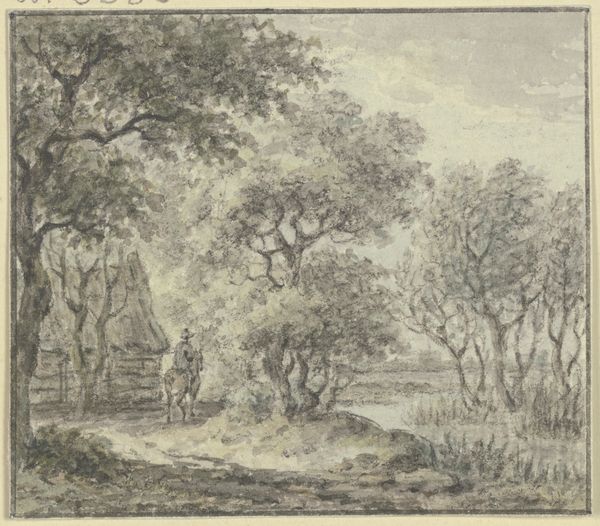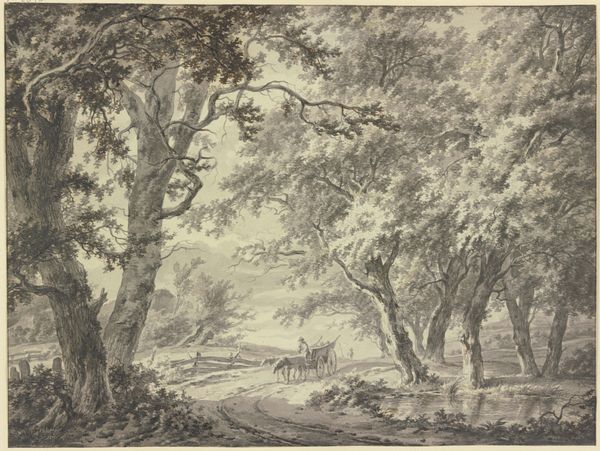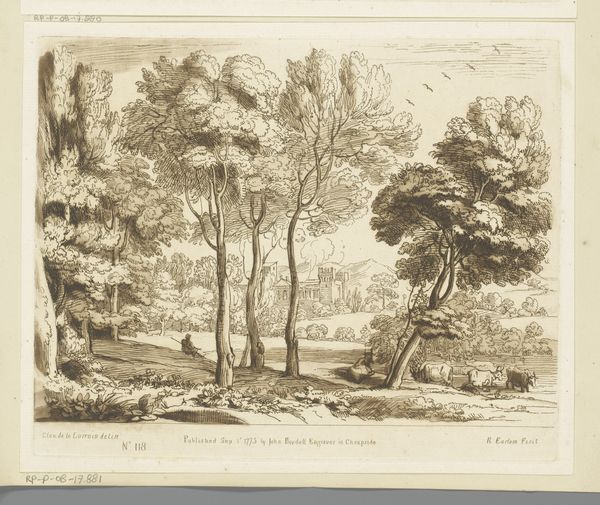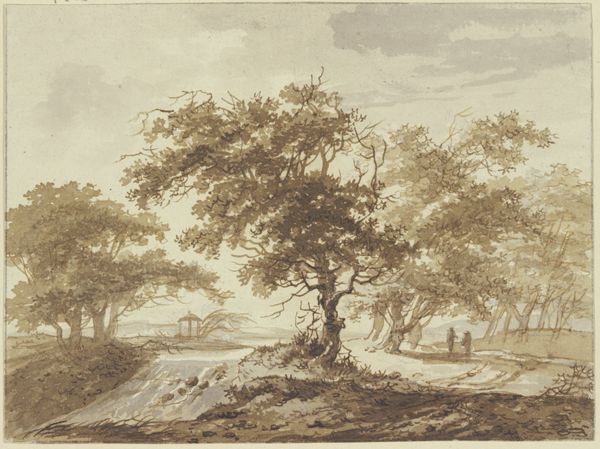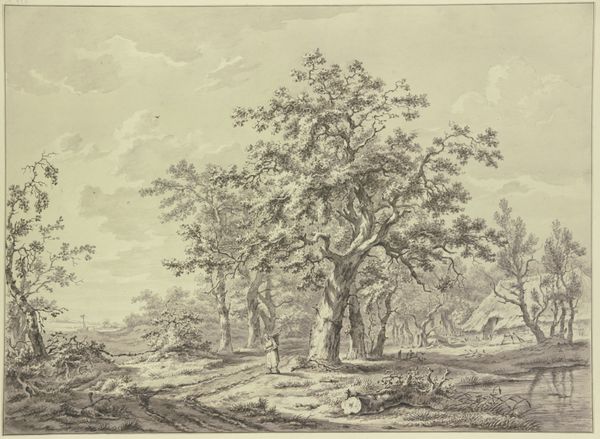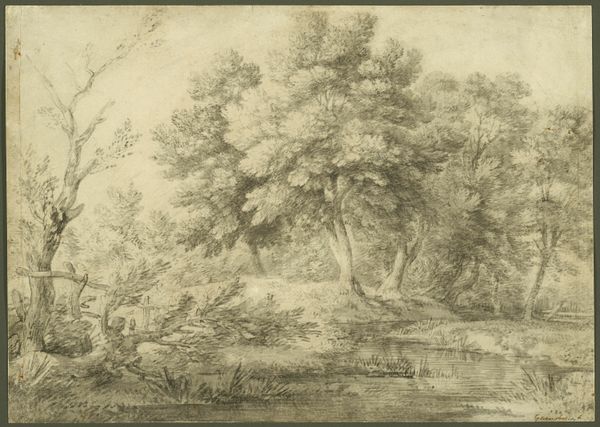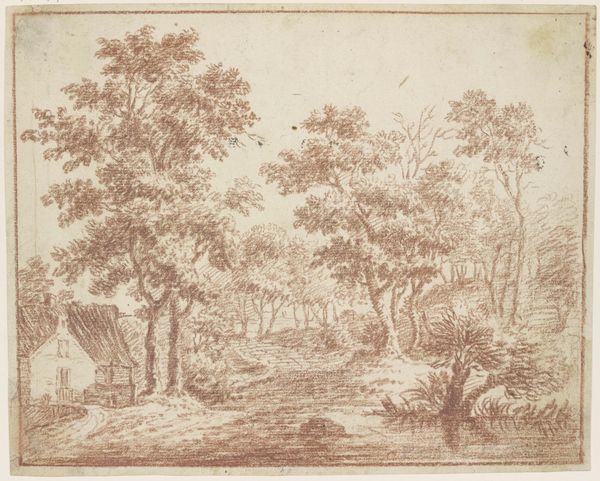
cardboard, drawing, ink, indian-ink
#
cardboard
#
landscape illustration sketch
#
drawing
#
toned paper
#
light pencil work
#
16_19th-century
#
pencil sketch
#
landscape
#
ink
#
german
#
pencil drawing
#
coloured pencil
#
indian-ink
#
pen-ink sketch
#
watercolour illustration
#
pencil art
#
watercolor
Copyright: Public Domain
Curator: Looking at this landscape, I feel a sense of quiet observation, almost like overhearing a hushed conversation between the trees. Editor: Indeed. We’re currently looking at "Schilfweiher zwischen Eichen," or "Reed Pond between Oaks," a drawing created around 1843 by Friedrich Metz. It resides here at the Städel Museum. He worked with pen and ink over a preliminary pencil sketch, all on cardboard. Curator: The oak trees, they stand as archetypal symbols of strength and longevity in Germanic culture. They almost serve as silent witnesses here. Editor: Absolutely. And you see that subdued palette? Metz seems to be consciously evoking a mood of contemplation. This was a time when the Romantics were really digging into landscapes as a reflection of inner states. One wonders about the social currents in Frankfurt at the time. Was this a reaction to industrialization, a longing for an idealized past? Curator: It’s interesting that he chose such common subjects. Oaks and reeds aren't particularly exotic, which gives the scene a relatable familiarity. He doesn’t glorify nature so much as offer it as a place of quiet refuge, doesn't he? You feel invited, as part of a viewing public hungry for this at the time, to escape into its depths, unlike the glorified battle scenes usually celebrated at the time. Editor: I agree. The pond reflects more than just the trees; it reflects an attitude toward nature itself. What do you think someone viewing it then may feel looking at this particular assembly of German trees and plant-life? Did they find themselves, or something to aspire to in its delicate beauty? Curator: It seems Metz subtly elevated everyday scenes of German soil to symbols of stability and rootedness within turbulent times. His visual vocabulary invites all to retreat within, maybe he does this with all that earthy ink. It’s rather comforting actually. Editor: I couldn't agree more. I walk away thinking, how little we sometimes need, to make an eloquent statement. A simple landscape can really tell complex histories of people and place, can’t it?
Comments
No comments
Be the first to comment and join the conversation on the ultimate creative platform.
